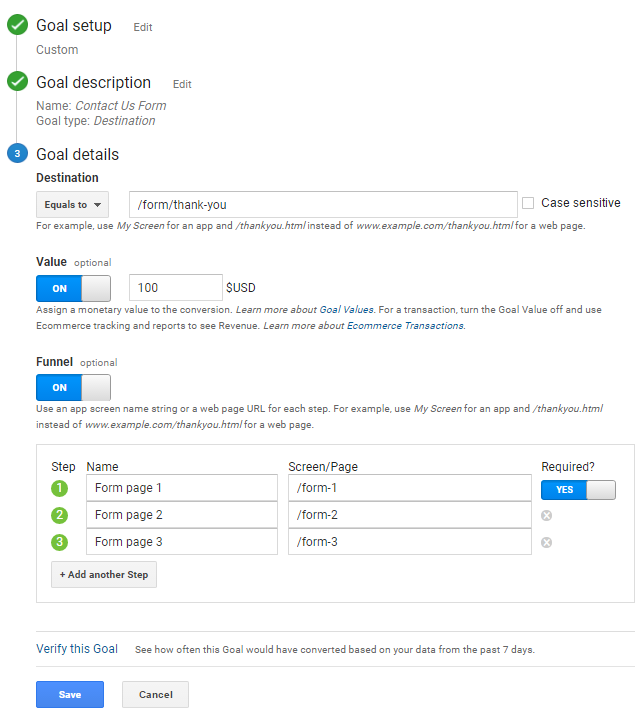What Data Is Google Analytics Goals Unable to Track: Find Out the Limitations
What Data Is Google Analytics Goals Unable to Track: Find Out the Limitations
Blog Article
Discover the Limitations of Google Analytics Goals: Introducing the Information Types That Remain Untrackable
As services significantly rely on data-driven decision-making, recognizing the limitations of devices like Google Analytics comes to be extremely important. While Google Analytics Goals offer beneficial insights right into customer communications, there exist data kinds that elude monitoring, presenting challenges to an extensive understanding of individual actions.
Insufficient User Journey Tracking
Incomplete customer trip tracking within Google Analytics can impede the ability to properly examine customer actions. When the customer trip is not totally tracked, there are voids in the data that prevent a detailed understanding of how users connect with a website. This lack of insight can bring about missed chances for optimization and renovations to the customer experience.
One typical issue with incomplete individual trip tracking is the inability to see the full course that users take previously finishing an objective or leaving the site. Without this info, it is testing to identify where users might be coming across obstacles or friction factors that stop them from transforming. Furthermore, insufficient monitoring can obscure the impact of particular advertising efforts or site adjustments on user actions.
To resolve this constraint, it is vital to establish appropriate tracking systems within Google Analytics to catch the whole individual trip. This may entail setting up event tracking, objective funnels, or utilizing tools like Google Tag Supervisor to make certain that no vital communications go unrecorded. By obtaining a thorough view of the user journey, site proprietors can make even more educated decisions to improve customer involvement and drive conversions.
Attribution Difficulties
Navigating via attribution challenges in Google Analytics calls for a comprehensive understanding of how different touchpoints add to the general conversion process. Attribution difficulties emerge from the intricacy of modern-day client trips, where customers engage with multiple networks before converting.
One typical acknowledgment difficulty is the problem in associating conversions to the correct resource, specifically in situations where individuals connect with several channels before transforming. Additionally, cross-device tracking presents an additional attribution difficulty, as individuals frequently switch over in between gadgets throughout their journey, making it testing to track their communications seamlessly.
Offline Conversions
Provided the challenges connected with connecting conversions precisely in online networks, the dimension of offline conversions offers a considerable possibility for online marketers looking for a more detailed understanding of their clients' trip. Offline conversions describe activities that consumers take in the physical globe, such as making acquisitions in brick-and-mortar stores or over the phone, participating in events, or involving with published products - what data is google analytics goals unable to track. These conversions are essential for businesses that operate both online and offline, as they supply beneficial insights right into the efficiency of advertising and marketing campaigns throughout various touchpoints
Tracking offline conversions commonly postured a considerable obstacle for marketing experts, as it was challenging to attach these activities back to details on the internet communications precisely. With developments in modern technology, such as the combination of CRM systems, one-of-a-kind identifiers, and discount coupon codes, companies can currently bridge the void between online and offline data to get a more alternative view of client actions. By effectively measuring offline conversions, marketing professionals can enhance their approaches, assign resources extra efficiently, and inevitably improve the total client experience.
Cross-Device Tracking
Cross-device tracking plays a crucial role in understanding the interconnected nature of customers' electronic interactions throughout several gadgets. In today's omnichannel world, where users effortlessly change in between tablets, desktops, and mobile phones, tracking their habits throughout these gadgets is necessary for online marketers to gain a thorough view of their consumer trip.

In addition, privacy problems and regulations such as GDPR and CCPA have better complex cross-device tracking. With users requiring more control over their data and increased constraints on monitoring technologies, marketers must discover ingenious and privacy-compliant methods to attach customer communications across site link gadgets.
Dynamic Web Content Involvement
Understanding customer interaction with dynamic content is crucial in maximizing digital advertising and marketing techniques for boosted target market interaction. Dynamic material describes website elements that change based upon user habits, choices, or various other variables, supplying a tailored experience. Nevertheless, tracking user interactions with dynamic content postures obstacles for typical analytics tools like Google Analytics.
While Google Analytics can track fundamental communications like clicks and page sights, it may struggle to capture even more nuanced engagements within dynamic content. what data is google analytics goals unable to track. Metrics such as time invested on details vibrant elements, float actions, or communications within pop-ups are usually not quickly measurable utilizing basic monitoring approaches. This constraint impedes marketing experts' ability to fully understand how individuals are engaging with dynamic material and customize their methods accordingly

Final Thought
Finally, Google Analytics goals have restrictions in tracking incomplete individual trips, attributing conversions accurately, capturing offline conversions, tracking cross-device interactions, and measuring vibrant material involvement. These constraints highlight the value of discovering extra tracking approaches and devices to obtain a much more thorough understanding of customer habits and conversions past what Google Analytics can supply.
While Google Analytics Goals offer beneficial understandings into customer communications, there exist information types that thwart monitoring, presenting difficulties to a comprehensive understanding of user habits.Insufficient individual journey tracking within Google Analytics can hinder the capability to accurately evaluate customer behavior. When the individual journey is not completely tracked, there are voids in the data that avoid a detailed understanding of just how customers interact with a website.One typical concern with incomplete individual trip tracking is the failure to see the complete path that users site take previously completing a goal or leaving the site. By gaining a detailed view go to website of the customer journey, site proprietors can make even more informed choices to enhance individual engagement and drive conversions.
Report this page